TCHAIKOVSKY’S FIFTH 4-5 May 2023
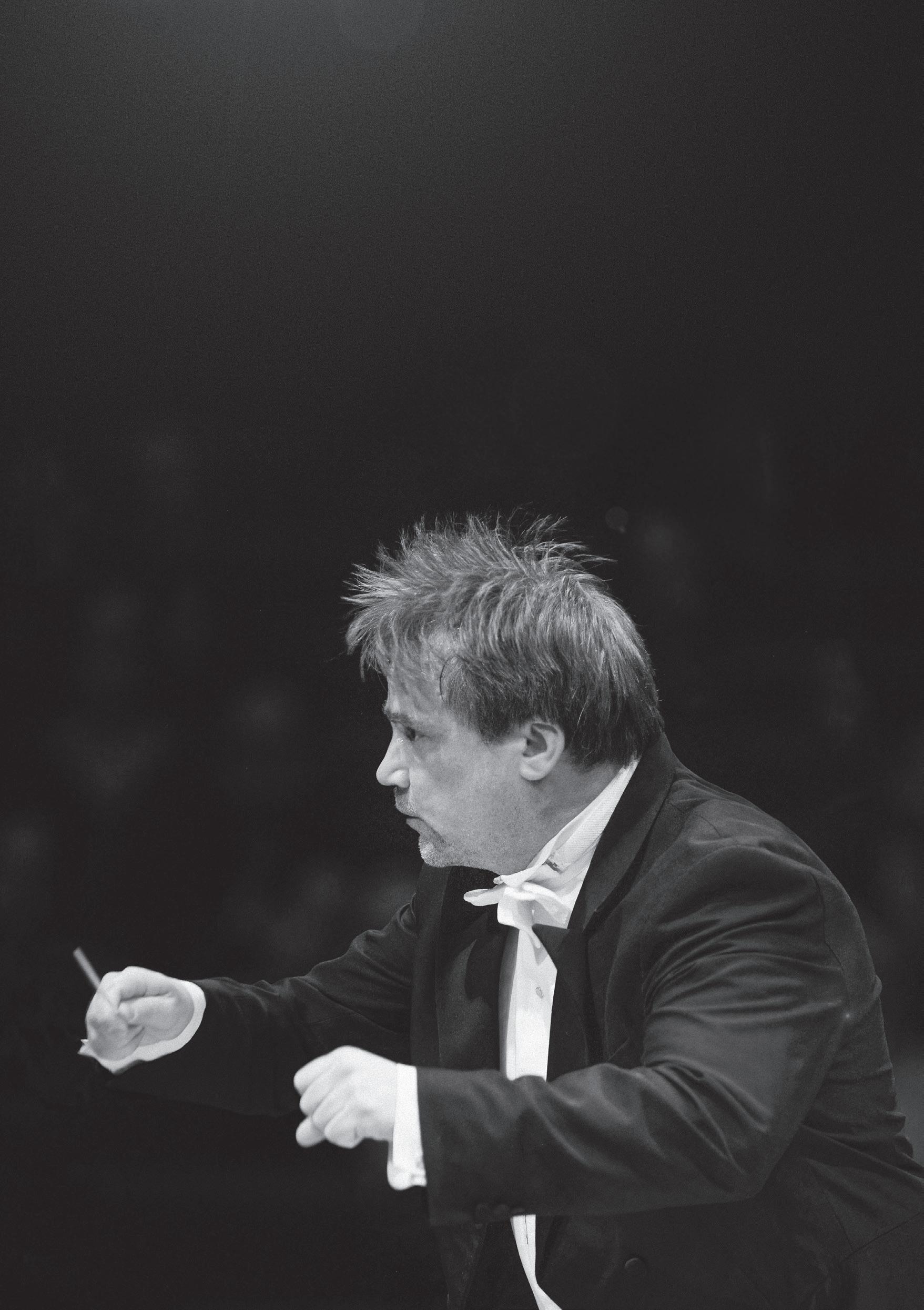
SCO.ORG.UK PROGRAMME
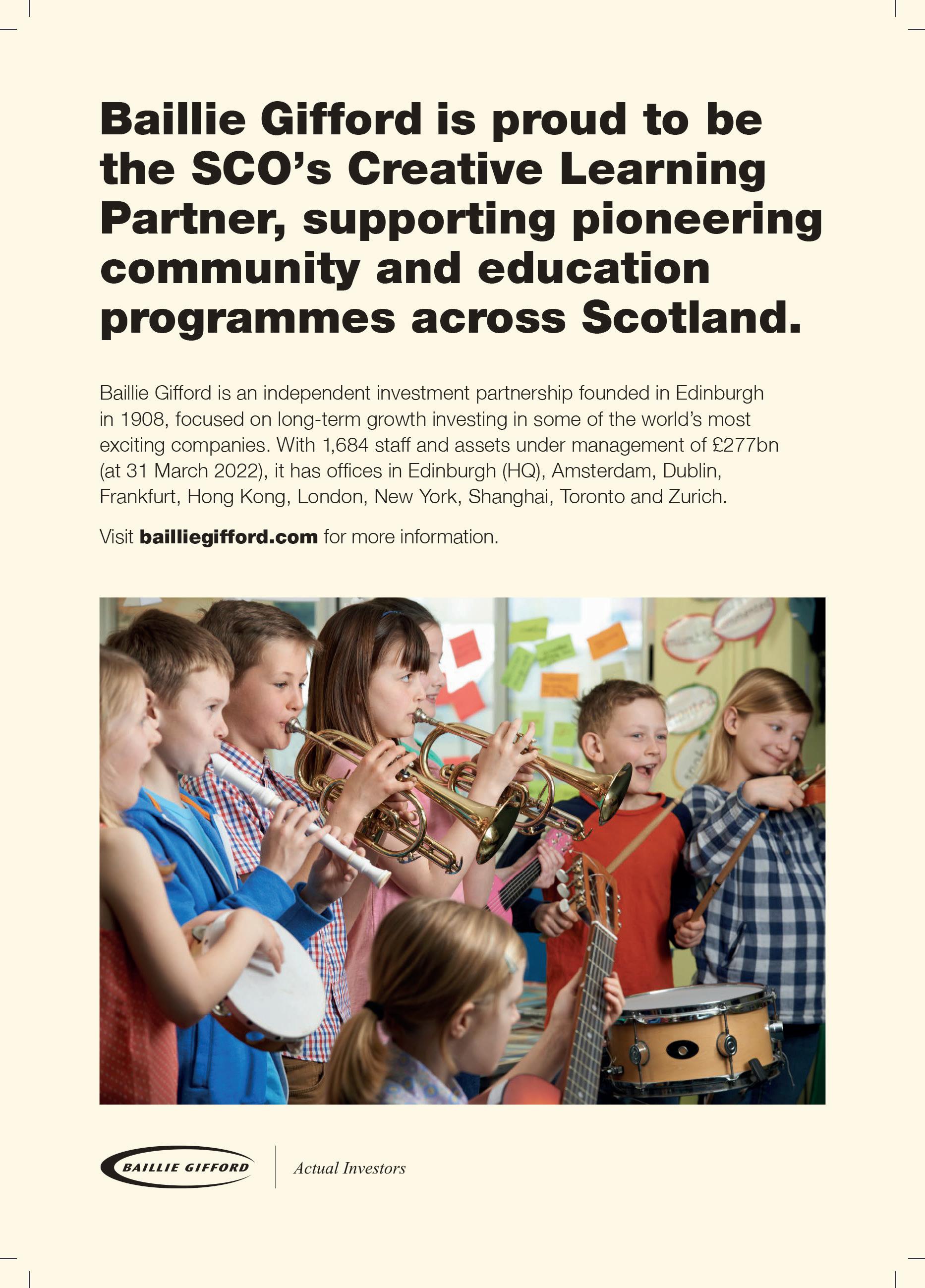
Season 2022/23
TCHAIKOVSKY’S FIFTH
Thursday 4 May, 7.30pm The Queen's Hall, Edinburgh
Friday 5 May, 7.30pm City Halls, Glasgow
Sibelius The Tempest Suite No 2
Miller I cannot love without trembling (Viola Concerto) (UK Premiere)
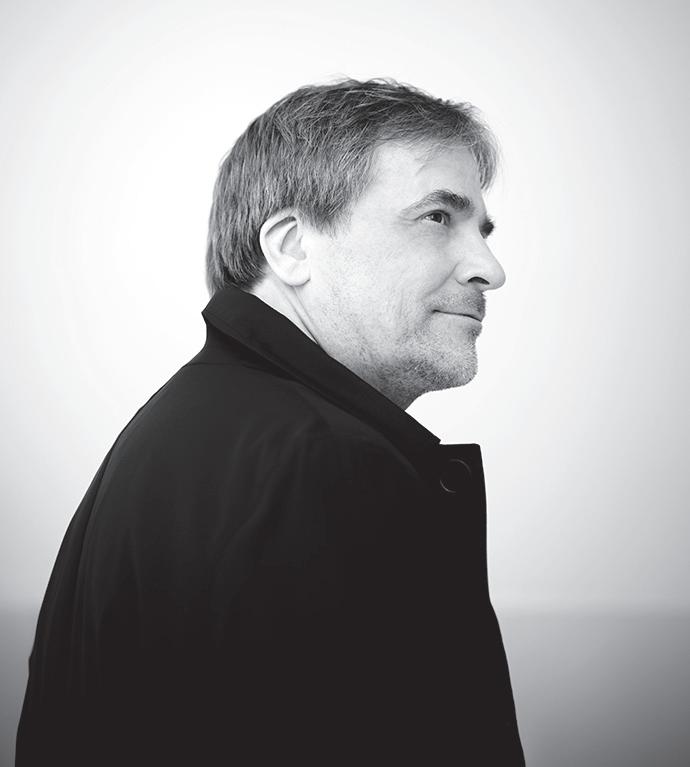
Co-commissioned by BBC Radio 3, Brussels Philharmonic, National Arts Centre, Ottawa, Canada and Scottish Chamber Orchestra, supported by The Viola Commissioning Circle.
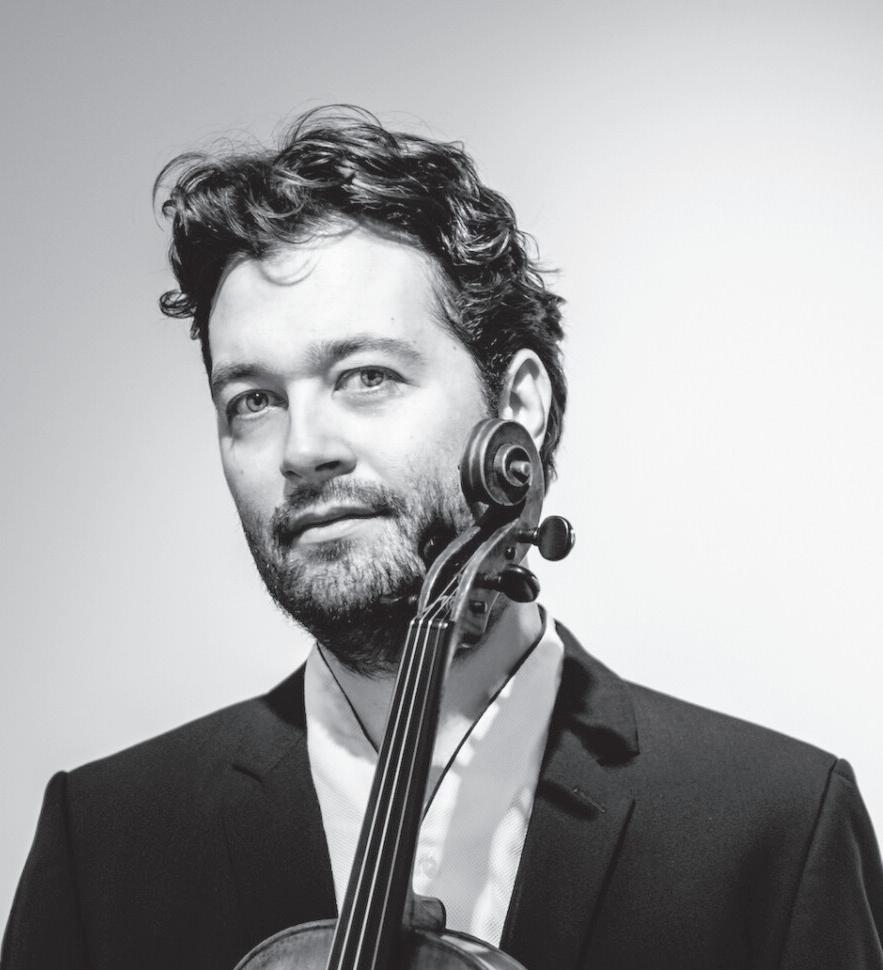

Interval of 20 minutes
Tchaikovsky (arr.
G. Morton)
John Storgårds Conductor
Lawrence Power Viola
John Storgårds
Symphony No 5
Lawrence Power
557 6800 | info@sco.org.uk | sco.org.uk
4 Royal Terrace, Edinburgh EH7 5AB +44 (0)131
The Scottish Chamber Orchestra is a charity registered in Scotland No. SC015039. Company registration No. SC075079.
© Marco Borggreve
Thank You FUNDING PARTNERS
The SCO is extremely grateful to the Scottish Government and to the City of Edinburgh Council for their continued support. We are also indebted to our Business Partners, all of the charitable trusts, foundations and lottery funders who support our projects, and to the very many individuals who are kind enough to give us financial support and who enable us to do so much. Each and every donation makes a difference and we truly appreciate it.
Core Funder
Authority
Learning Partner
Benefactor
Local
Creative
Business Partners
Key Funders


Delivered by
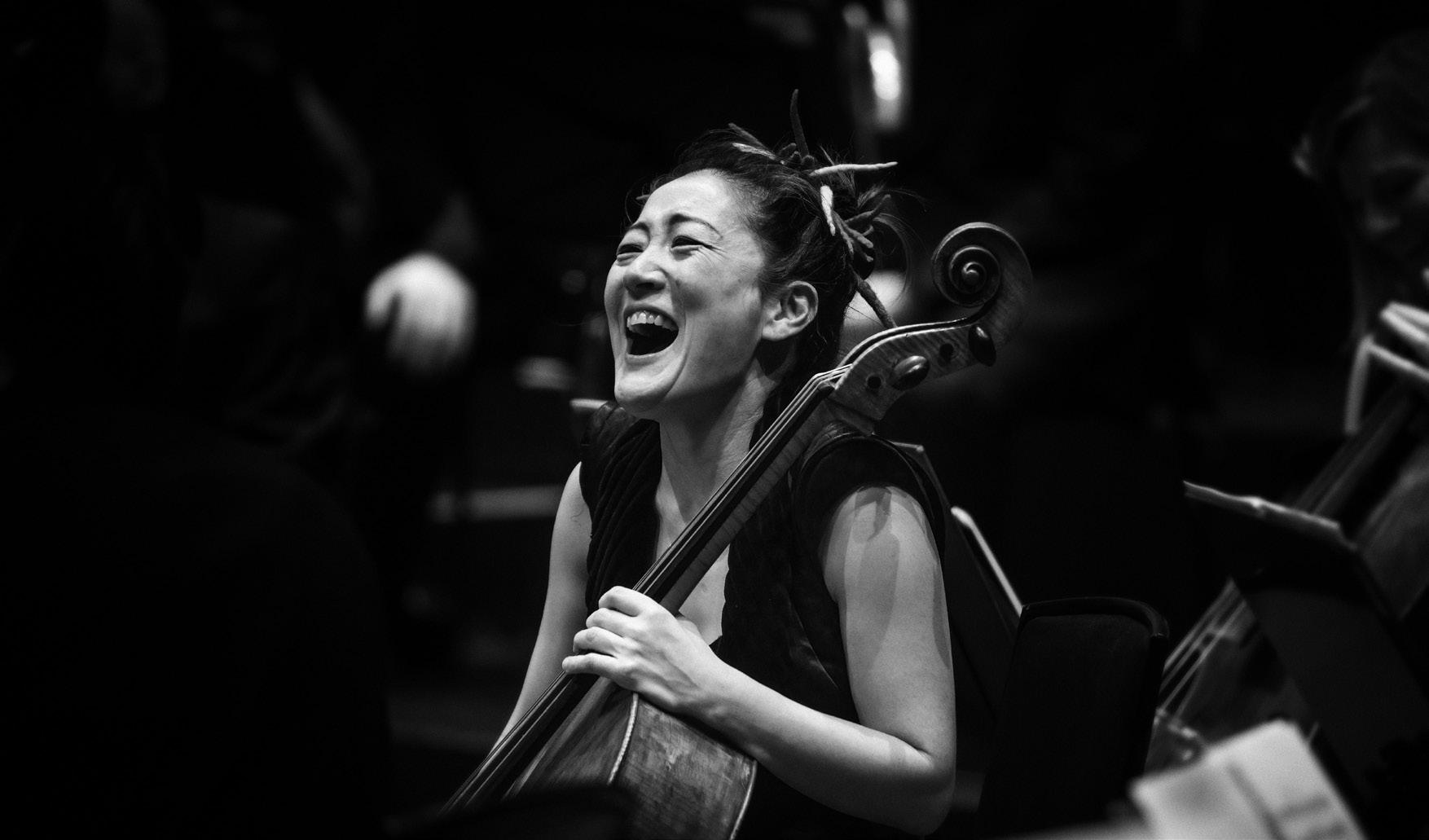 Su-a Lee
Sub-Principal Cello
Su-a Lee
Sub-Principal Cello
Thank You SCO DONORS
Diamond
Lucinda and Hew Bruce-Gardyne
Malcolm and Avril Gourlay
John and Jane Griffiths
James and Felicity Ivory
Christine Lessels
Clair and Vincent Ryan
Alan and Sue Warner
Platinum
David Caldwell in memory of Ann
Tom and Alison Cunningham
Dr Peter Williamson and Ms Margaret Duffy
Judith and David Halkerston
J Douglas Home
Audrey Hopkins
David and Elizabeth Hudson
Dr and Mrs Peter Jackson
Dr Daniel Lamont
Chris and Gill Masters
Duncan and Una McGhie
Anne-Marie McQueen
James F Muirhead
Patrick and Susan Prenter
Mr and Mrs J Reid
Martin and Mairi Ritchie
Elaine Ross
Hilary E Ross
George Rubienski
Jill and Brian Sandford
Michael and Elizabeth Sudlow
Robert and Elizabeth Turcan
Tom and Natalie Usher
Finlay and Lynn Williamson
Ruth Woodburn
Gold
Lord Matthew Clarke
James and Caroline Denison-Pender
Andrew and Kirsty Desson
David and Sheila Ferrier
Chris and Claire Fletcher
James Friend
Iain Gow
Christopher and Kathleen Haddow
Ian Hutton
Gordon Kirk
Robert Mackay and Philip Whitley
Mike and Karen Mair
Anne McAlister and Philip Sawyer
Gavin McEwan
Roy and Svend McEwan-Brown
John and Liz Murphy
Alison and Stephen Rawles
Andrew Robinson
Ian S Swanson
John-Paul and Joanna Temperley
Anne Usher
Catherine Wilson
Neil and Philippa Woodcock
Georgina Wright
Bruce and Lynda Wyer
Silver
Roy Alexander
Joseph I Anderson
Pamela Andrews and Alan Norton
Dr Peter Armit
William Armstrong
Fiona and Neil Ballantyne
Timothy Barnes and Janet Sidaway
The Batsleer Family
Jack Bogle
Jane Borland
Michael and Jane Boyle
Mary Brady
Elizabeth Brittin
John Brownlie
Laura Buist
Robert Burns
Sheila Colvin
Lorn and Camilla Cowie
Lord and Lady Cullen of Whitekirk
Adam and Lesley Cumming
Jo and Christine Danbolt
Dr Wilma Dickson
Dr and Mrs Alan Falconer
Sheila Ferguson
Dr James W E Forrester
Dr William Fortescue
Jeanette Gilchrist
David Gilmour
Dr David Grant
Margaret Green
Andrew Hadden
J Martin Haldane
Ronnie and Ann Hanna
Ruth Hannah
Robin Harding
Roderick Hart
Norman Hazelton
Ron and Evelynne Hill
Clephane Hume
Tim and Anna Ingold
David and Pamela Jenkins
Catherine Johnstone
Julie and Julian Keanie
Marty Kehoe
Professor Christopher and Mrs Alison Kelnar
Dr and Mrs Ian Laing
Janey and Barrie Lambie
Graham and Elma Leisk
Geoff Lewis
Dorothy A Lunt
Vincent Macaulay
Joan MacDonald
Isobel and Alan MacGillivary
Jo-Anna Marshall
James McClure in memory of Robert Duncan
Gavin McCrone
Michael McGarvie
Brian Miller
James and Helen Moir
Alistair Montgomerie
Margaret Mortimer and Ken Jobling
Andrew Murchison
Hugh and Gillian Nimmo
David and Tanya Parker
Hilary and Bruce Patrick
Maggie Peatfield
John Peutherer in memory of Audrey Peutherer
James S Potter
Alastair Reid
Fiona Reith
Olivia Robinson
Catherine Steel
Ian Szymanski
Michael and Jane Boyle
Douglas and Sandra Tweddle
Margaretha Walker
James Wastle
C S Weir
Bill Welsh
Roderick Wylie
We believe the thrill of live orchestral music should be accessible to everyone, so we aim to keep the price of concert tickets as fair as possible. However, even if a performance were completely sold out, we would not cover the presentation costs.
We are indebted to everyone acknowledged here who gives philanthropic gifts to the SCO of £300 or greater each year, as well as those who prefer to remain anonymous. We are also incredibly thankful to the many individuals not listed who are kind enough to support the Orchestra financially, whether that is regularly or on an ad hoc basis. Every single donation makes a difference and we are truly grateful.
Become a regular donor, from as little as £5 a month, by contacting Hannah Wilkinson on 0131 478 8364 or hannah.wilkinson@sco.org.uk.
Thank You PRINCIPAL CONDUCTOR'S CIRCLE
Our Principal Conductor’s Circle is made up of individuals who share the SCO’s vision to bring the joy of music to as many people as possible. These individuals are a special part of our musical family, and their commitment and generosity benefit us all – musicians, audiences and creative learning participants alike. We would like to extend our grateful thanks to them for playing such a key part in the future of the SCO.
American Development Fund
Erik Lars Hansen and Vanessa C L Chang
Annual Fund
James and Patricia Cook
Hedley G Wright
International Touring Fund
Gavin and Kate Gemmell
CHAIR SPONSORS
Conductor Emeritus Joseph Swensen
Donald and Louise MacDonald
Chorus Director Gregory Batsleer
Anne McFarlane
Principal Second Violin
Marcus Barcham Stevens
Jo and Alison Elliot
Principal Viola Max Mandel
Kenneth and Martha Barker
Viola Steve King
Sir Ewan and Lady Brown
Principal Cello Philip Higham
The Thomas Family
Cello Donald Gillan
Professor Sue Lightman
Productions Fund
The Usher Family
Bill and Celia Carman
Anny and Bobby White
Visiting Artists Fund
Colin and Sue Buchan
Anne and Matthew Richards
Cello Eric de Wit
Jasmine Macquaker Charitable Fund
Principal Double Bass Nikita Naumov
Caroline Hahn and Richard Neville-Towle
Principal Flute André Cebrián
Claire and Mark Urquhart
Principal Oboe Robin Williams
Hedley G Wright
Principal Clarinet Maximiliano Martín
Stuart and Alison Paul
Principal Bassoon Cerys Ambrose-Evans
Claire and Anthony Tait
Principal Timpani Louise Lewis Goodwin
Geoff and Mary Ball
–––––
Our Musicians YOUR ORCHESTRA
First Violin
Colin Scobie
Oleguer Beltran Pallarés
Lowri Porter
Aisling O’Dea
Fiona Alexander
Amira Bedrush-McDonald
Ruth Crouch
Amy Cardigan
Second Violin
Marcus Barcham Stevens
Gordon Bragg
Rachel Smith
Stewart Webster
Niamh Lyons
Kristin Deeken
Viola
Florian Peelman
Zoë Matthews
Brian Schiele
Steve King
Cello
Philip Higham
Su-a Lee
Donald Gillan
Eric de Wit
Bass
Nikita Naumov
Louis van der Mespel
Flute and Piccolo
Marta Gómez
Emma Roche
Oboe
Robin Williams
Katherine Bryer
Clarinet
Maximiliano Martín
Scott Lygate
Bass Clarinet
Scott Lygate
Bassoon
Information correct at the time of going to print
Trumpet
Peter Franks
Shaun Harrold
Eoin O’Gorman
Trombone
Jamie Tweed
Nigel Cox
Timpani
Tom Hunter
Percussion
Iain Sandilands
Tom Hunter
Cerys Ambrose-Evans
Alison Green Horn
Anna Douglass
Jo Withers
Helena Jacklin
Christine McGinley
Marcus Barcham Stevens
Principal Second Violin
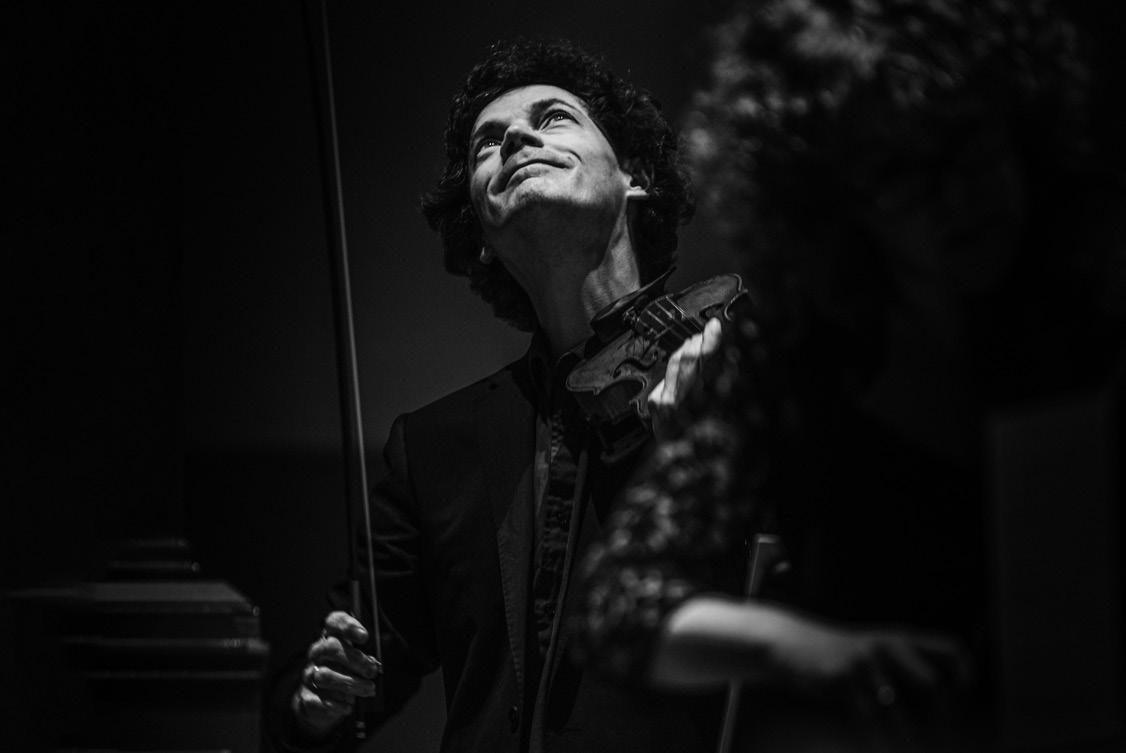
Harp
Eleanor Hudson
WHAT YOU ARE ABOUT TO HEAR
Sibelius (1809–1847)
The Tempest Suite No 2 (1925–26)
Chorus of the Winds
Intermezzo
Dance of Nymphs
Prospero
Song I
Song II
Miranda
The Naiads
Dance Episode
Miller (b. 1976)
I cannot love without trembling
(Viola Concerto) (2022) UK Premiere
Co-commissioned by BBC Radio 3, Brussels Philharmonic, National Arts Centre, Ottawa, Canada and Scottish Chamber Orchestra, supported by The Viola Commissioning Circle.
Verse 1: To love purely is to consent to distance
Verse 2: I cannot love without trembling
Verse 3: Buried deep under the sound of his own lamentations is the pearl of the silence of God
Verse 4: Absolutely unmixed attention is prayer
Cadenza: Stars and blossoming fruit trees: Utter permanence and extreme fragility give an equal sense of eternity
Tchaikovsky (1840-1893)
Symphony No 5 in C minor, Op 67 (1888)
arr. G. Morton (2017)
Andante – Allegro con anima
Andante cantabile con alcuna licenza
Allegro moderato
Andante maestoso – Allegro vivace
Theatrical imagination, profound contemplation and a vivid battle against the forces of fate come together in tonight’s wide-ranging concert.
The incidental music Jean Sibelius wrote for Shakespeare’s The Tempest in 1925-26 formed his penultimate large-scale work, followed only by the brooding, forest-themed tone poem Tapiola , and then silence for the final three decades of his life. So crippling had the effects of self-criticism become to Finland’s most celebrated and respected composer that he even notoriously burnt the unfinished manuscript of his partcomposed Eighth Symphony, providing music history with one of its most enduring what-ifs.
The suggestion of writing music for Shakespeare’s final play was first put to Sibelius as far back as 1901, by his friend and patron Axel Carpelan (another of whose ideas would go on to become Tapiola). But it took more definite form in 1925, when Sibelius was approached by his Copenhagen publisher, Wilhelm Hansen, with news that the Danish capital’s Royal Theatre was planning a production of The Tempest for the following year, and that its producer would like Sibelius to write the music for it.
The production proved an enormous success. One review observed: ‘Shakespeare and Sibelius, these two geniuses, have finally found one another.’ Sibelius’s original score – consisting of 34 separate numbers, running to more than an hour of music, and written for vocal soloists, chorus, harmonium and large orchestra – was of an opulence
that might surprise modern-day theatregoers. He derived two suites from the incidental music – the first keeping its lavish forces, but the second, heard tonight, for a more modest orchestra –and combined and condensed several of his original numbers in the suites’ individual movements, aiming for musical effectiveness rather than necessarily narrative sense.

The Second Suite’s opening ‘Chorus of the Winds’ comes from near the play’s beginning, depicting the gentle breezes that remain once The Tempest’ s opening storm, whipped up by the spirit Ariel, has subsided. Listen out for the prominent harp, the instrument that Sibelius used to symbolise Prospero, the sorcerer (and rightful Duke of Milan) who’s exiled on the island and acts as puppetmaster to the play’s other characters. The graceful but sorrowful ‘Intermezzo’ originally formed a bridge between Acts III and
IV, and symbolises Alonso, King of Naples, repenting for his misdeeds in the (mistaken) belief that Prospero has caused the death of his son, Ferdinand (and Prospero’s harp is never far away). In the tripping minuet of the ‘Dance of the Nymphs’, mermaids celebrate Miranda and Ferdinand’s engagement in Act IV, while ‘Prospero’ is a portrait of the play’s central character from Act II, undeniably Baroque in its majesty, but with slippering, shifting harmonies that reflect his ambiguous motives.
The rather melancholy ‘Song I’ is an instrumental version of the song sung by Ariel at Miranda and Ferdinand’s union in Act IV, while the hint of Iberian energy in ‘Song II’ reflects Ariel’s joy at being released from his bonds in Act V. The gossamer textures and unpredictable melody of ‘Miranda’ capture the elusive character of Prospero’s daughter, in music originally
Theproductionproved an enormous success.
Onereviewobserved:
‘ShakespeareandSibelius, thesetwogeniuses,have finallyfoundoneanother.’
Jean Sibelius in 1923
planned to introduce Act III of the play, and ‘The Naiads’ takes us right back to the beginning, when Ariel plays in the water following the play’s opening storm – a distant memory of which can be heard about halfway through. Sibelius’s closing ‘Dance Episode’ is a portrait of Prospero’s villainous brother Antonio, who organised the magician’s exile from Milan in The Tempest ’s backstory. The movement pulls the classic Sibelian trick of transforming what was originally a melody into an accompaniment figure simply by speeding it up. It builds to the Suite’s only truly loud music, before melting away magically into silence.
Born on Vancouver Island in British Columbia, and now resident in London, Cassandra Miller is one of today’s most fascinating composers, creating works that sometimes peer deep into the heart of music itself, examining not only how it works, but also its almost spiritual meaning to us. She’s particularly interested in transcription as a creative process, whereby reworking existing music – for example the Greek melodies in tonight’s work – can transform and transfigure it, sometimes beyond recognition. Miller has often written works with specific performers in mind: she’s collaborated regularly with soprano Juliet Fraser, for example, as well as the Bozzini Quartet and conductor Ilan Volkov. She wrote tonight’s viola concerto specifically for British viola player Lawrence Power, having previously composed the solo piece Daylonging, Slacktide for Power in July 2020, during the first months of the Covid pandemic. Power premiered that piece online in September 2020.
Miller writes about tonight’s I cannot love without trembling :
"In the last year of her life, the French philosopher Simone Weil wrote in a letter to her friend Gustave Thibon, ‘Human existence is so fragile a thing and exposed to such dangers that I cannot love without trembling.’ In Gravity and Grace (published posthumously by Thibon), Weil wrote about the nature of distance and separation, expanding on Plato’s concept of metaxu – ie that which both separates and connects – grounding her mystical philosophy in the idea (to summarise crudely) that every absence can be interpreted as presence. ‘Every separation is a link.’
Thirty years earlier, following a period of upheaval as Greece resisted Ottoman rule, the Epirot violinist Alexis Zoumbas left his mountain home in Northern Greece for the USA. In New York, he recorded his mournful shimmering music – including several examples of moiroloi , an improvisatory composition of keening gestures and flickering flame-like ornamentation. The moiroloi compositions refer to the moirologia funeral laments of the women of Epirus, and invoke the feeling of xenatia (a Greek word which translates to English as ‘a catastrophic longing for home’). In these recordings, one can clearly hear the immigrant’s connection to the realitypresence of home, through the act – as in Weil’s metaxu – of singing its absence.
This concerto is about the basic human need to lament, that is, to speak the distance/sing the separation (in a trajectory loosely narrated by the Weil quotations that name each of the
concerto’s sections). It is also about Alexis Zoumbas. Using one of his moiroloi recordings as a source, I sang along many times (first to Zoumbas, then to myself) in a ritualised, meditative process I call ‘automatic singing’. This method transformed the moiroloi into the violist’s trembling-loving-mourning sighs. Within Zoumbas’ plaintive song, I sought a metaphysical space in which to dream – a space of separation-connection-absencepresence – in the hope to lament and to dream together in this hall tonight."
By the time Tchaikovsky embarked on what would become his Fifth Symphony, in the spring of 1888, it had been ten years since his Fourth (though he’d written his Byron-inspired 'Manfred' Symphony during that intervening decade). His creative life was riddled with periods of intense selfdoubt, and this was one of them: he feared his creativity had dried up, but nonetheless wrote to his brother Modest in May 1888:
Cassandra Miller is one of today’smostfascinating composers,creating works that sometimes peerdeepintotheheart ofmusicitself,examining notonlyhowitworks,but alsoitsalmostspiritual meaningtous.

‘I am hoping to collect, little by little, material for a symphony.’
In the end, he put the Fifth Symphony together in the space of four months, during the summer of 1888, ensconced at his holiday retreat in Frolovskoye, near Moscow. He wrote copious letters to his patron and supporter Nadezhda von Meck during that time, providing something of a blow-by-blow commentary on the developing composition. ‘I am exceedingly anxious to prove to myself, as to others, that I am not played out as a composer,’ he wrote in June 1888, when beginning work in earnest. ‘Have I told you that I intend to write a symphony? The beginning was difficult, but now inspiration seems to have come. We shall see.’
If writing the Fifth Symphony was something of a triumph over self-doubt for Tchaikovsky, then that’s perhaps an idea we can also hear embedded in the
Dr Cassandra Miller
© Benjamin Ealovega
Symphony’s music itself. In later letters to von Meck, he revealed more about the specific inspirations behind the piece: the inescapable forces of fate that forever haunted him, his fragile beliefs in his own abilities, even darker thoughts about his very role and purpose. Indeed, the Fourth, Fifth and Sixth are often seen as a kind of unofficial trilogy of symphonies, each one representing a different perspective on Tchaikovsky’s battles with ‘fate’ (most devastatingly in the final ‘Pathétique’ Symphony).
But if ‘fate’ is the inescapable presence hovering behind these three major works, we should be clear about what it means in this context. Tchaikovsky himself described fate as ‘the force that prevents the impulse towards happiness from achieving its aim’. That’s quite a long way away from any idea of predestination, or of a higher power guiding one’s life. In Tchaikovsky’s case, the idea of ‘fate’
is surely far more directly linked to his homosexuality, his desires forbidden by the society that defined his reputation, and the efforts he felt compelled to make in order to conceal it. The biggest of those was his ill-fated marriage to former student Antonina Milyukova in 1877, which lasted less than three months and almost caused the composer a complete breakdown (it didn’t do much for Milyukova’s mental health either). After recovering in the Swiss resort of Clarens, Tchaikovsky became increasingly convinced that his life was being guided by some kind of malevolent force.
If that’s the case, though, his Fifth Symphony represents at least a possible victory over the forces of darkness –though its final movement might sound a little too good to be true. The Symphony’s heart-on-sleeve emotion went down a storm with the audience at its premiere in St Petersburg on 17 November 1888,
 Pyotr Ilyich Tchaikovsky
Pyotr Ilyich Tchaikovsky
‘If Beethoven’s Fifth is Fateknockingatthedoor, Tchaikovsky’sFifthis Fatetryingtogetout.’
though the critics were more sniffy. One particular wag wrote about an early performance: ‘If Beethoven’s Fifth is Fate knocking at the door, Tchaikovsky’s Fifth is Fate trying to get out.’
Tchaikovsky, of course, felt the critics were right. ‘Having played my Symphony twice in Petersburg and once in Prague, I have come to the conclusion that it is a failure. There is something repellent in it, some over-exaggerated colour, some insincerity of fabrication that the public instinctively recognises,’ he wrote dejectedly to von Meck. The following year, however, he took rather a different perspective after none other than Johannes Brahms admired the Symphony at a Hamburg performance: ‘I have started to love it again. My earlier judgment was undeservedly harsh,’ he wrote to his nephew.
There’s little doubt that Tchaikovsky’s Fifth is a symphony it’s hard to feel indifferent about. It conveys big emotions, and demands equally largescale emotional engagement from its listeners, through its ever-developing ‘storyline’ of battles with fate. That storyline begins right at the start of the first movement, when the rich, low sound of a clarinet announces the Symphony’s unforgettable ‘fate’ theme, which will return again and again in different guises throughout the piece. The beginning is almost like a funeral march, though the energy quickly builds for the movement’s main waltz-like theme, introduced by clarinet and bassoon, and its more rustic second theme, propelled along by urgent woodwind rhythms. Despite its brightness and energy, however, the movement ends back in the gloom of its opening.
Tchaikovsky’s second movement cushions a ravishing horn melody (said to have inspired John Denver’s 1970s ‘Annie’s Song’) against luscious strings: if the Symphony’s opening theme represented fate, it’s hard to see this as anything other than love. The return of the fate theme, however, blared out across the full orchestra, brings the music to a sudden halt, though the movement manages to regain its composure and gather its passions again.
The brief, blithe waltz of the third movement could have come straight out of one of Tchaikovsky’s ballet scores, though the fate theme returns quietly to trouble its otherwise serene close. You might be surprised to hear the fate theme return yet again at the opening of Tchaikovsky’s finale, now bold, positive, and in the brighter major. Is this fate finally overcome, or fate itself the victor? After the strings introduce a new, aggressive, march-like falling theme, there’s what sounds like open musical warfare between the two ideas – though fate surely comes out on top, judging by the swaggering, dance-like setting of the fate theme, which surely counts as a victory celebration of sorts.
Tchaikovsky originally wrote his Fifth Symphony, of course, for the full forces of a larger-scale symphony orchestra. Tonight’s arrangement for chamber orchestra – made by Sheffield-based conductor and arranger George Morton in 2017 – retains all of the detail of the original, while focusing its power on a narrower target.
© David Kettle
Conductor JOHN STORGÅRDS

Chief Conductor of the BBC Philharmonic Orchestra and Principal Guest Conductor of Canada’s National Arts Centre Orchestra Ottawa, John Storgårds has a dual career as a conductor and violin virtuoso and is widely recognised for his creative flair for programming as well as his rousing yet refined performances. As Artistic Director of the Lapland Chamber Orchestra, a title he has held for over 25 years, Storgårds earned global critical acclaim for the ensemble’s adventurous performances and award-winning recordings.
Storgårds appears with such orchestras as Berliner Philharmoniker, Bamberger Symphoniker, Gewandhausorchester Leipzig, Münchner Philharmoniker, RundfunkSinfonieorchester Berlin, ORF Radio-Symphonieorchester Wien, Netherlands Philharmonic Orchestra, Orchestre National de France, Orchestra Sinfonica Nationale della RAI, BBC Symphony Orchestra and London Philharmonic Orchestra as well as all major Nordic orchestras including the Helsinki Philharmonic Orchestra, where he was Chief Conductor from 2008 to 2015.
Storgårds’ vast repertoire includes all symphonies by Sibelius, Nielsen, Bruckner, Brahms, Beethoven, Mozart, Schubert and Schumann. As soloist, he gave the Finnish premiere of Schumann’s own violin transcription of the cello concerto, as well as the Violin Sonata No 3. Embracing contemporary repertoire in his programmes, Storgårds regularly performs world premieres with many works being dedicated to him including Per Nørgård’s Symphony No 8 as well as Kaija Saariaho’s Nocturne for solo violin.
Following his much-anticipated debut with the Berliner Philharmoniker performing Bruckner’s 6th symphony earlier last year, the start of Storgårds’ 2022/23 season featured the world premiere production of Tapio Tuomela’s new opera The Fur Hat Opera, which Storgårds performed in Rovaniemi as well as at the Finnish National Opera in Helsinki with his Lapland Chamber Orchestra. Storgårds also returned to the Finnish National Opera with Shostakovich’s Lady Macbeth of Mtsensk.
For full biography please visit sco.org.uk
© Marco Borggreve
Viola LAWRENCE POWER
Internationally-acclaimed viola player Lawrence Power is widely heralded for his richness of sound, technical mastery and his passionate advocacy for new music. Lawrence has advanced the cause of the viola both through the excellence of his performances, whether in recitals, chamber music or concertos and the creation of the Viola Commissioning Circle (VCC), which has led to a substantial body of fresh repertoire for the instrument by today’s finest composers.
The 2022/23 season has seen Lawrence performing the recently commissioned Hillborg Viola Concerto with the Swedish Radio Orchestra, Sinfonieorchester Basel and Dresden Philharmonie. Further highlights have included concerts with Finnish Radio, Rotterdam and Brussels Philharmonic Orchestras, as well as the Munich Chamber and MDR Sinfonieorchester. Over the past decade, Lawrence has become a regular guest performer with orchestras of the highest calibre, from Chicago Symphony, Boston Symphony, Royal Concertgebouw, Bayerischer Rundfunk, Stockholm, Bergen and Warsaw Philharmonic orchestras to the Chamber Orchestra of Europe, BBC Symphony, Philharmonia, BBC Scottish Symphony and Royal Liverpool Philharmonic orchestras, with conductors such as such as Osmo Vänska, Lahav Shani, Parvo Järvi, Vladimir Jurowski, Andrew Manze, Edward Gardner, Nick Collon and Ilan Volkov.
Lawrence founded the production company Âme with film maker Jessie Rodger to produce films that explore the boundaries between music and other art forms. Lawrence and Jessie presented Fathom, a boundary-pushing concert experience at the Southbank Centre in December 2022 performing a unique selection of old and new music fusing live performance, cinematic projection and intricate, 360-degree sound design.
As a chamber musician he is in much demand and regularly performs at Verbier, Salzburg, Aspen, Oslo and other festivals with artists such as Steven Isserlis, Nicholas Alstaedt, Simon Crawford-Phillips, Vilde Frang, Maxim Vengerov and Joshua Bell. Lawrence was announced as an Associate Artist at the Wigmore Hall in 2021, a position he will hold for five years, performing at least once each season.

Biography
SCOTTISH CHAMBER ORCHESTRA
The internationally celebrated Scottish Chamber Orchestra is one of Scotland’s National Performing Companies.

Formed in 1974 and core funded by the Scottish Government, the SCO aims to provide as many opportunities as possible for people to hear great music by touring the length and breadth of Scotland, appearing regularly at major national and international festivals and by touring internationally as proud ambassadors for Scottish cultural excellence.
Making a significant contribution to Scottish life beyond the concert platform, the Orchestra works in schools, universities, colleges, hospitals, care homes, places of work and community centres through its extensive Creative Learning programme. The SCO is also proud to engage with online audiences across the globe via its innovative Digital Season.
An exciting new chapter for the SCO began in September 2019 with the arrival of dynamic young conductor Maxim Emelyanychev as the Orchestra’s Principal Conductor.
The SCO and Emelyanychev released their first album together (Linn Records) in November 2019 to widespread critical acclaim. The repertoire - Schubert’s Symphony No. 9 in C major ‘The Great’ –is the first symphony Emelyanychev performed with the Orchestra in March 2018.
The SCO also has long-standing associations with many eminent guest conductors and directors including Conductor Emeritus Joseph Swensen, François Leleux, Pekka Kuusisto, Nicola Benedetti, Richard Egarr, Andrew Manze and John Storgårds.
The Orchestra enjoys close relationships with many leading composers and has commissioned almost 200 new works, including pieces by the late Sir Peter Maxwell Davies, Sir James MacMillan, Sally Beamish, Martin Suckling, Einojuhani Rautavaara, Karin Rehnqvist, Mark-Anthony Turnage, Nico Muhly, Anna Clyne and Associate Composer Jay Capperauld.
For full biography please visit sco.org.uk
BRAHMS REQUIEM
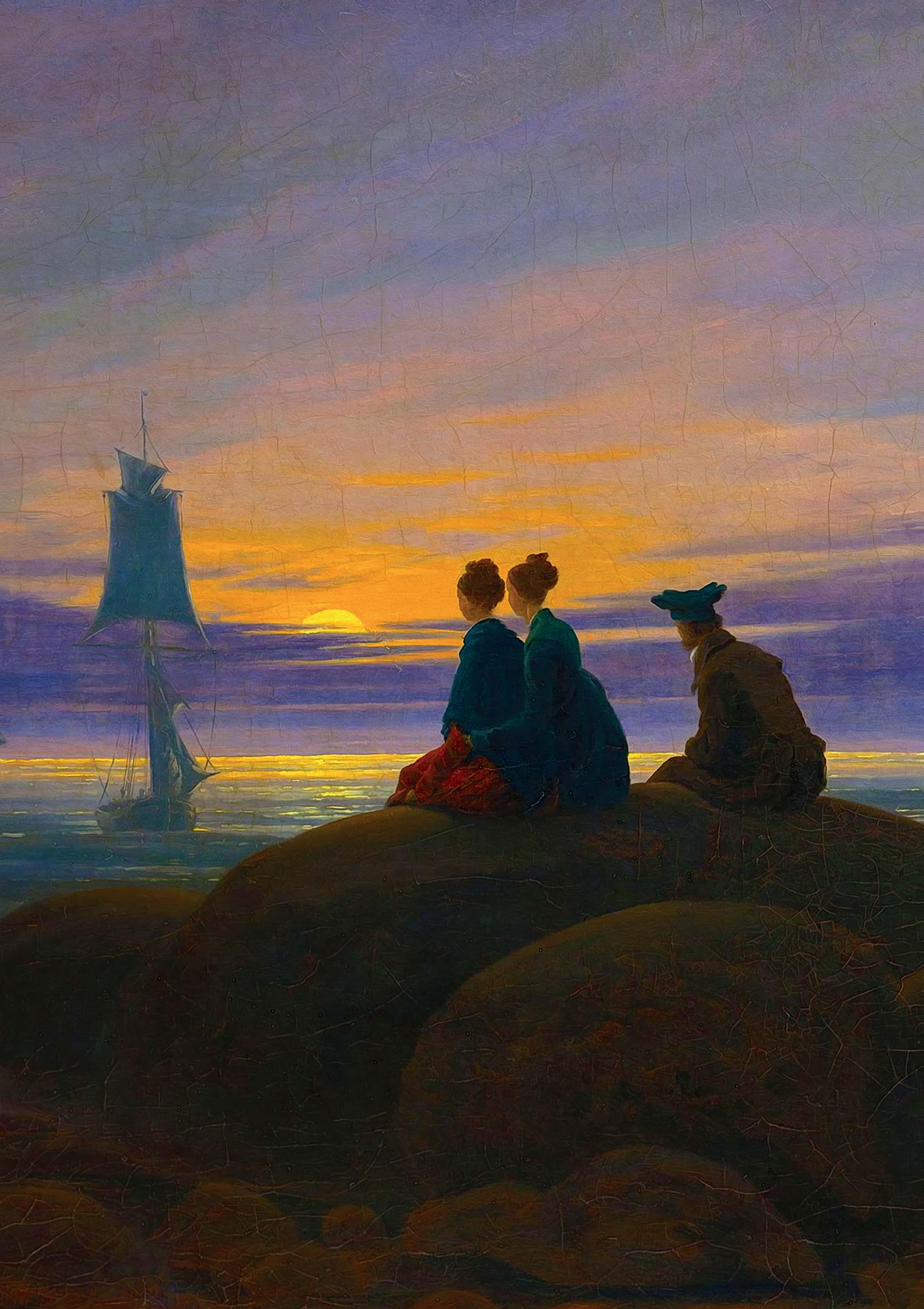
11-12 May, 7.30pm, Usher Hall, Edinburgh | City Halls, Glasgow
Emelyanychev Conductor
INCLUDING Maxim
Sophie Bevan Soprano
Hanno Müller-Brachmann Bass Baritone
Company Registration Number: SC075079. A charity registered in Scotland No. SC015039. 18 and Under FREE BOOK NOW SCO.ORG.UK
SCO Chorus Gregory Batsleer Chorus Director
INSPIRING AUDIENCES FOR 50 YEARS EXPLORE THE SEASON
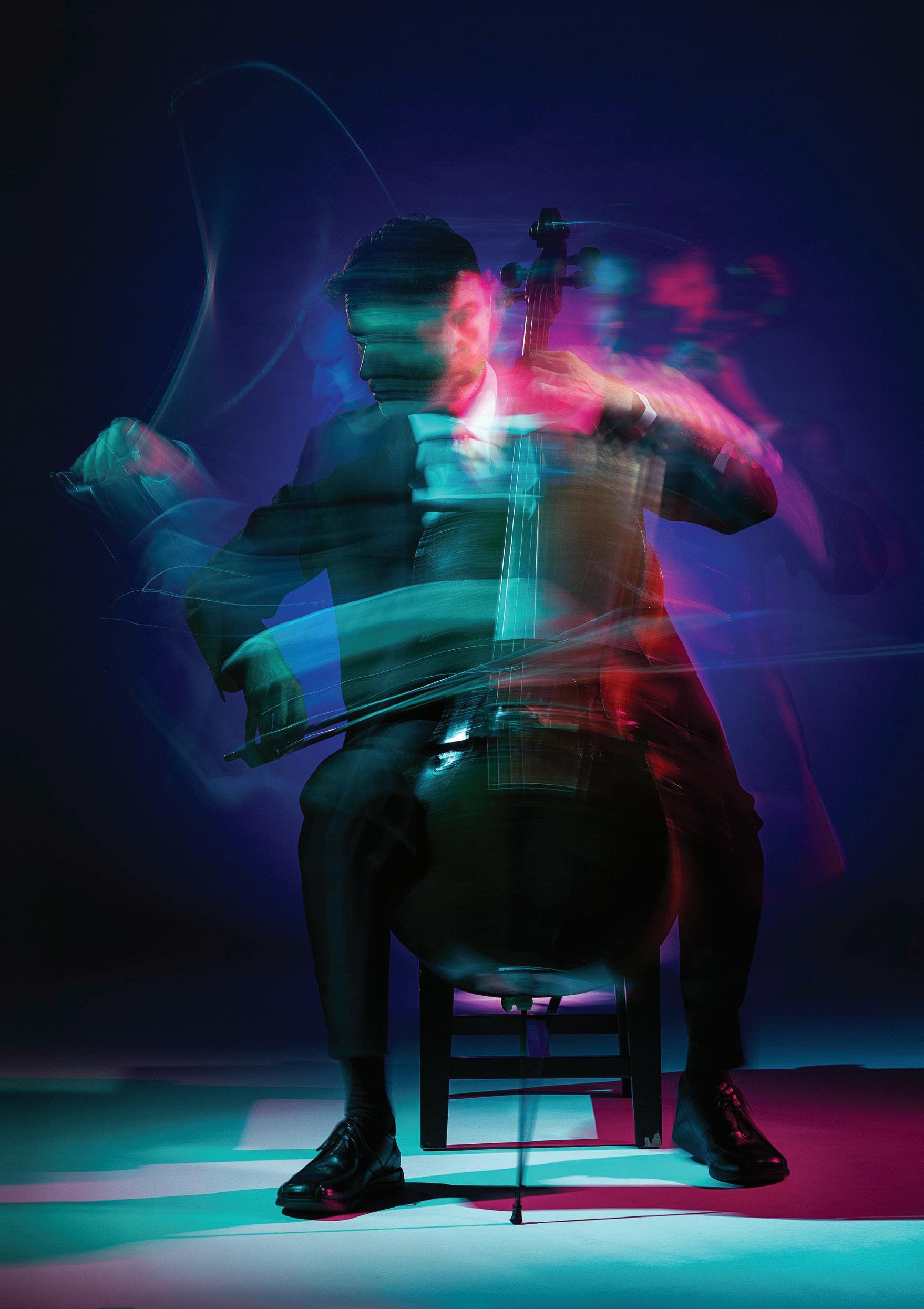
sco.org.uk 23 | 24 Concert Season Company Registration Number: SC075079. A charity registered in Scotland No. SC015039.


WE BUILD RELATIONSHIPS THAT LAST GENERATIONS.
Generations of our clients have trusted us to help build and preserve their wealth.

For over 250 years, they have relied on our expert experience to help make sense of a changing world. During that time we’ve earned an enviable reputation for a truly personal approach to managing wealth.



For those with over £250,000 to invest we o er a dedicated investment manager, with a cost structure and level of service, that generates exceptional client loyalty.


Find out more about investing with us today: Murray Clark at our Edinburgh o ce on 0131 221 8500, Gordon Ferguson at our Glasgow o ce on 0141 222 4000 or visit www.quiltercheviot.com



Investors should remember that the value of investments, and the income from them, can go down as well as up and that past performance is no guarantee of future returns. You may not recover what you invest. Quilter Cheviot and Quilter Cheviot Investment Management are trading names of Quilter Cheviot Limited. Quilter Cheviot Limited is registered in England with number 01923571, registered o ce at Senator House, 85 Queen Victoria Street, London, EC4V 4AB. Quilter Cheviot Limited is a member of the London Stock Exchange and authorised and regulated by the UK Financial Conduct Authority. INVESTING FOR GENERATIONS
BE PART OF OUR FUTURE
A warm welcome to everyone who has recently joined our family of donors, and a big thank you to everyone who is helping to secure our future.
Monthly or annual contributions from our donors make a real difference to the SCO’s ability to budget and plan ahead with more confidence. Each and every contribution is crucial, and your support is truly appreciated.
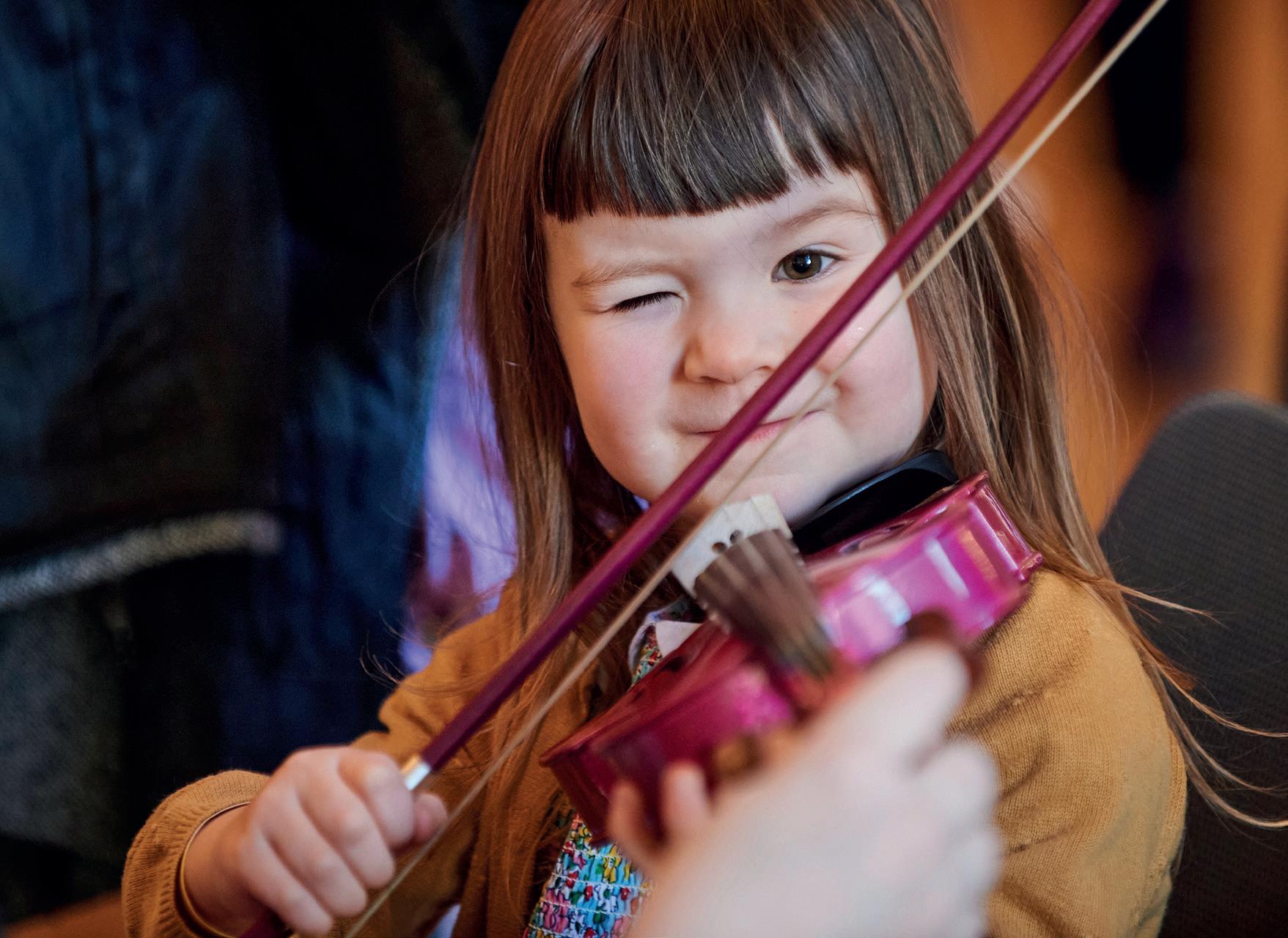
For more information on how you can become a regular donor, please get in touch with Hannah Wilkinson on 0131 478 8364 or hannah.wilkinson@sco.org.uk.
SCO.ORG.UK/SUPPORT-US
The SCO is a charity registered in Scotland No SC015039.








 Su-a Lee
Sub-Principal Cello
Su-a Lee
Sub-Principal Cello



 Pyotr Ilyich Tchaikovsky
Pyotr Ilyich Tchaikovsky















